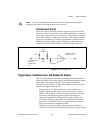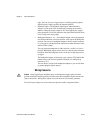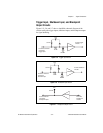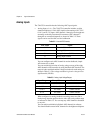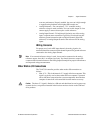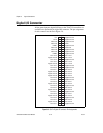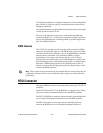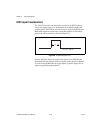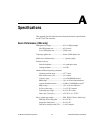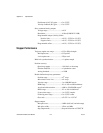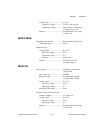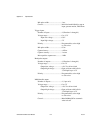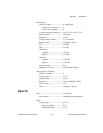
Chapter 5 Signal Connections
© National Instruments Corporation 5-15 7344/7334 Hardware User Manual
The 32-bit digital I/O port is configured inhardware as four8-bit digital I/O
ports. The bits in a port are typically controlled and read with byte-wide
bitmapped commands.
All digital I/O lines have programmable direction and polarity. Each output
circuit can sink and source 24 mA.
The state of the input pins at power-up is controlled by the DPull pin.
Connecting DPull to +5 V or leaving it unconnected configures all pins in
all ports for 100 kΩ pull-ups. Connecting DPull to ground configures the
ports for 100 kΩ pull-downs.
PWM Features
The 7344/7334 controllers provide two pulse width modulation (PWM)
outputs on the digital I/O connector. The PWM outputs generate periodic
waveforms whose period and duty cycles can be independently controlled
through software commands. You can think of PWM as a digital
representation of an analog value, because the duty cycle is directly
proportional to the desired output value. PWM outputs are typically used
for transmitting an analog value through an optocoupler. A simple lowpass
filter turns a PWM signal back into its corresponding analog value. If
desired, you can use the PCLK input instead of the internal source as the
clock for the PWM generators.
Note
These signals are not associated in any way with the PID servo control loop; they are
configured in software. Refer to your FlexMotion Software Reference Manual for more
information.
RTSI Connector
The physical RTSIbus interface varies depending onthe type of 7334/7334
controller.
For the PCI-7344 and PCI-7334, the RTSI bus is connected with a ribbon
cable across National Instruments PCI devices with RTSI capability.
The FW-7344 RTSI bus is connected withan external 14-pinshielded cable
across National Instruments distributed devices with RTSI capability.
The PXI-7344 requires no extra cable, because the PXI bus directly
connects the RTSI bus across all National Instruments PXI devices.





